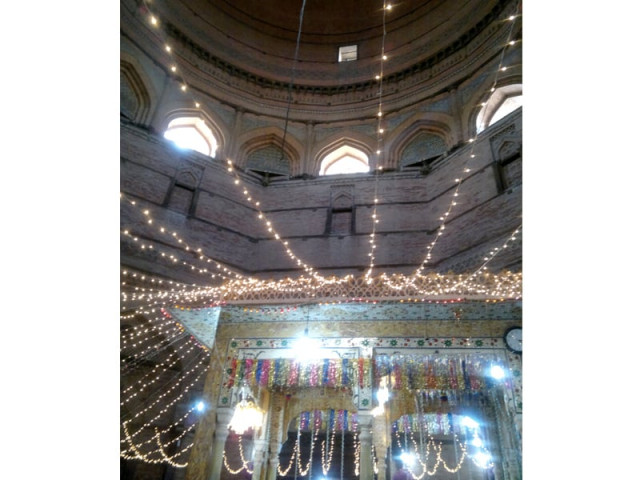
The historic city of Multan is said to be 5000 B.C old which has also been declared as sister city of Rome. The shrine of Hazrat Shah Rukn-e-Alam is thronged by devotees throughout the year. A devotee, Ismaeel, 63, in the hottest of summer at 2pm, who reached Shah Rukn-e-Alam's grave from Kamalia, district Toba Tek Singh, was praying for the success of his son Mudassar, 22, in his examination. "I used to come here twice a month as my teacher Qari Mahboob says shrines are source of merriment," said Muhammad Akhtar, a student of Jamia Khair-ul-Maad after completing his nafal prayer beside Shah Rukn-e-Alam's grave.
In addition to devotees, common visitors like Safia Bibi reached from Dera Ghazi Khan to witness the inspiring layout of the shrine which is typical of Suhrawadi tombs, with three entrances, a western-facing mehrab, and an original main entrance on the southern axis. The mausoleum of Hazarat Shah Rukn-ud-din Alam Abul Fateh, commonly known as Shah Rukn Alam Suhrawadi, the grandson of Hazrat Ghous Bahauddin Zakariya is a three-tiered structure, quite different from the nearby Shrine of Bahauddin Zakariya and other earlier shrines which rest upon a square-shaped base. Born on Ramazan 9, 735, his forefathers had arrived from Makkah to Khwazam.
According to Arshad, an official of Auqaf Department, around 2,000-3,000 devotees and visitors come to the shrine of Shah Rukn-e-Alam mostly on Thursdays, Fridays and Sundays and 1,500-2,000 people on other days of the week. Sources in Auqaf Department said that over 90% devotees belong to Sindh while the rest of the people belong to Southern districts of Punjab.
The shrine is considered to be the earliest example of Tughluq architecture. They further said it attracts over 100,000 pilgrims to the annual Urs.
Published in The Express Tribune, September 30th, 2019.


















COMMENTS
Comments are moderated and generally will be posted if they are on-topic and not abusive.
For more information, please see our Comments FAQ